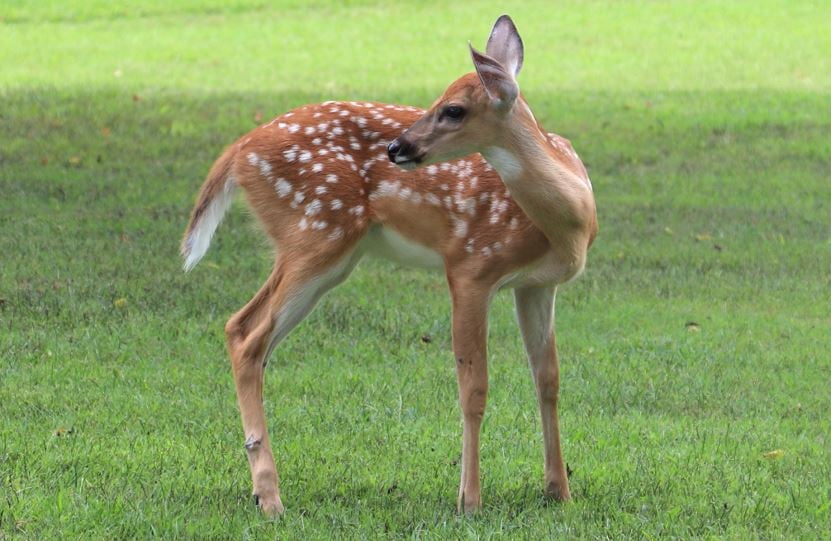Oh, Deer!
 Photo: Lisa Zins
Photo: Lisa ZinsAlthough most people think of deer as cute forest creatures with retiring behavior, due to an growing population, they have become a major garden pest throughout the country. Although they tend to keep to forest edges and fields grazing on grasses and leaves, they become more daring when food is scarce, venturing into suburban yards.
Deer graze and browse leaves, stems and buds of many woody plants, as well as alfalfa, roses, hostas, and all manner of vegetables and fruits. Their damage is evident because they leave jagged leaf edges on the eaten plants, not to mention distinctive cloven hoof prints and bean-shaped droppings.
Prevention and Control
- Although deer will eat anything if hungry enough, given a choice they tend to stay away from succulent plants, poisonous plants, pungent flavored plants, and plants with hairy or furry leaves. Try swapping out some of your plants for deer-resistant alternatives:
- Siberian bugloss insead of hosta
- Daffodils instead of tulips
- Peonies instead of roses
- False indigo (Baptisia spp.) instead of daylilies
- Juniper instead of arborvitae
- Some gardeners have had success using human hair, dog hair, soap, garlic repellents, blood meal, rotten eggs, hot pepper spray, citrus-based repellents, or predator urine spread around or on flowers and trees.
- Music or talk radio can deter deer.
- Deer can be scared away by motion-sensing devices attached to lights.
- Of all the methods, though, fencing is the most reliable. It's best to erect the fence before deer have found your garden or yard. For more information, read Animal Fencing Techniques.
Print this Article:
Get the Dirt
Stay up to date on new articles and advice. Please fill out the information below.
